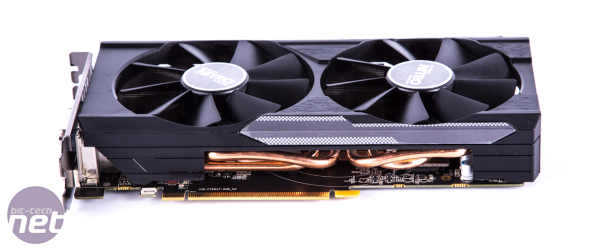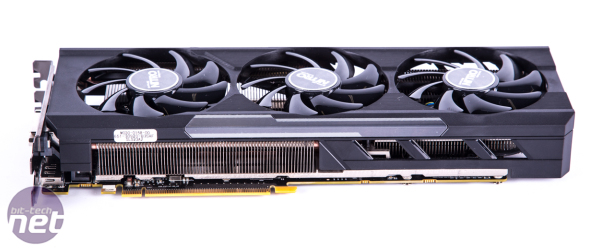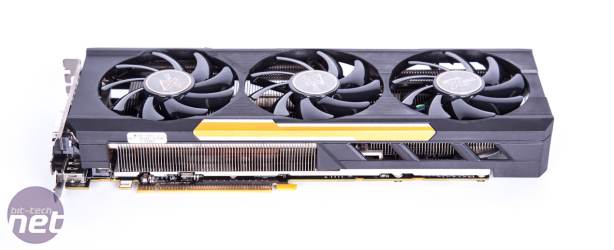Alien: Isolation sets the tone of what we can expect from Sapphire's new R9 300-series products. Generally speaking, the Sapphire R9 390X Tri-X and R9 390 Nitro are incredibly close with the R9 390X managing to increase its lead at higher resolutions due to the extra shaders of the GPU core. The Sapphire R9 390 is also slightly faster than the previous generation R9 290X thanks to the faster video memory and slight overclock. Both the Sapphire R9 390X and R9 390 seem capable for smooth 1440p gaming, but the R9 380 Nitro, on the other hand, is geared more towards 1080p users.
Battlefield 4 and Crysis 3 paint the same narrative as before, where the Sapphire R9 390X and R9 390 are consistently within a few frames per second of each other while the Sapphire R9 380 struggles to keep up beyond 1080p. The 4GB framebuffer of the R9 380 is plenty for those higher resolutions but the lack of GPU horsepower is what bogs performance down.
Grand Theft Auto V delivers a reasonable experience on all Sapphire's R9 300-series cards; the R9 380 Nitro puts in a strong showing at 1440p delivering an average close to the magic 60. All AMD's Hawaii-based GPUs seem to cluster very close to each other in our testing but, importantly, they all fail to overtake Nvidia's GTX 980 in Grand Theft Auto V.
Middle Earth: Shadow of Mordor is able to utilise to pixel-crunching power of AMD's GCN architecture and at 1440p and 4K we observe excellent performance on the Sapphire R9 390X Tri-X and R9 390 Nitro, both of which are able to overtake the GTX 980 at 4K. The R9 380 Nitro starts to lose fluidity beyond 1080p, although gamers could still drive these higher resolutions with some settings tweaks.
The Witcher 3 demonstrates fairly consistent performance across all resolutions and Sapphire's R9 390X and R9 390 stay narrowly behind the GTX 980 throughout. Sapphire has potentially missed a trick by not opting for a more aggressive factory overclock out of the box.
Unigine Valley always favours Nvidia GPUs since the 3D engine is tessellation-heavy which lends itself to Nvidia's Maxwell architecture through the use of a strong geometry back-end. Despite being ahead in many of our game tests, the Sapphire R9 390 Nitro sits just behind the R9 290X which seems to maintain a lead with its extra shaders. Unigine Valley shows that there's quite a large performance gap between the R9 380 and R9 390 which is yet to be filled... in the previous generation said gap was populated by the R9 280X.
Power consumption figures are extremely interesting in that the Sapphire R9 390 Nitro delivers performance almost identical to the Sapphire R9 390X Tri-X yet consumes much less power. Based on price, power consumption and performance the Sapphire R9 390 Nitro is shaping up to be the sweet-spot graphics card for AMD. Power-draw figures from the R9 380 peaked surprisingly high, at 367W, despite the fact typical power consumption was much lower, at around 330W.
Just like with power consumption, the Sapphire R9 390 Nitro also comes out in a strong position in terms of temperatures. The triple-fan cooling solution deployed on both the R9 390 Nitro and R9 390X Tri-X is highly effective and virtually silent, yet more impressive still is the fact Sapphire maintains a dual-slot solution.
Battlefield 4 and Crysis 3 paint the same narrative as before, where the Sapphire R9 390X and R9 390 are consistently within a few frames per second of each other while the Sapphire R9 380 struggles to keep up beyond 1080p. The 4GB framebuffer of the R9 380 is plenty for those higher resolutions but the lack of GPU horsepower is what bogs performance down.
Click to enlarge
Grand Theft Auto V delivers a reasonable experience on all Sapphire's R9 300-series cards; the R9 380 Nitro puts in a strong showing at 1440p delivering an average close to the magic 60. All AMD's Hawaii-based GPUs seem to cluster very close to each other in our testing but, importantly, they all fail to overtake Nvidia's GTX 980 in Grand Theft Auto V.
Middle Earth: Shadow of Mordor is able to utilise to pixel-crunching power of AMD's GCN architecture and at 1440p and 4K we observe excellent performance on the Sapphire R9 390X Tri-X and R9 390 Nitro, both of which are able to overtake the GTX 980 at 4K. The R9 380 Nitro starts to lose fluidity beyond 1080p, although gamers could still drive these higher resolutions with some settings tweaks.
Click to enlarge
The Witcher 3 demonstrates fairly consistent performance across all resolutions and Sapphire's R9 390X and R9 390 stay narrowly behind the GTX 980 throughout. Sapphire has potentially missed a trick by not opting for a more aggressive factory overclock out of the box.
Unigine Valley always favours Nvidia GPUs since the 3D engine is tessellation-heavy which lends itself to Nvidia's Maxwell architecture through the use of a strong geometry back-end. Despite being ahead in many of our game tests, the Sapphire R9 390 Nitro sits just behind the R9 290X which seems to maintain a lead with its extra shaders. Unigine Valley shows that there's quite a large performance gap between the R9 380 and R9 390 which is yet to be filled... in the previous generation said gap was populated by the R9 280X.
Click to enlarge
Power consumption figures are extremely interesting in that the Sapphire R9 390 Nitro delivers performance almost identical to the Sapphire R9 390X Tri-X yet consumes much less power. Based on price, power consumption and performance the Sapphire R9 390 Nitro is shaping up to be the sweet-spot graphics card for AMD. Power-draw figures from the R9 380 peaked surprisingly high, at 367W, despite the fact typical power consumption was much lower, at around 330W.
Just like with power consumption, the Sapphire R9 390 Nitro also comes out in a strong position in terms of temperatures. The triple-fan cooling solution deployed on both the R9 390 Nitro and R9 390X Tri-X is highly effective and virtually silent, yet more impressive still is the fact Sapphire maintains a dual-slot solution.

MSI MPG Velox 100R Chassis Review
October 14 2021 | 15:04












Want to comment? Please log in.